6 Best Make Alternatives to Automate Workflows in 2026

What happens when your automation tool can’t keep up with your team’s growth? Make, once the go-to workflow automation tool, functions fine for simple tasks with its drag-and-drop builder.
Yet the concern begins when you try to connect multiple platforms, run multi-step workflows, or depend on the powerful automation features you expected. That’s when many discover that most workflow automation platforms fall short.
In this post, you’ll explore six Make alternatives that can even automate complex workflows in 2026.
Experience automation without limits by trying Activepieces for free!
TL;DR
These are the best Make alternatives you should try out:
- Activepieces
- Microsoft Power Automate
- IBM Robotic Process Automation
- Huginn
- Odin AI
- Workato
Why Look for Make Alternatives in 2026?
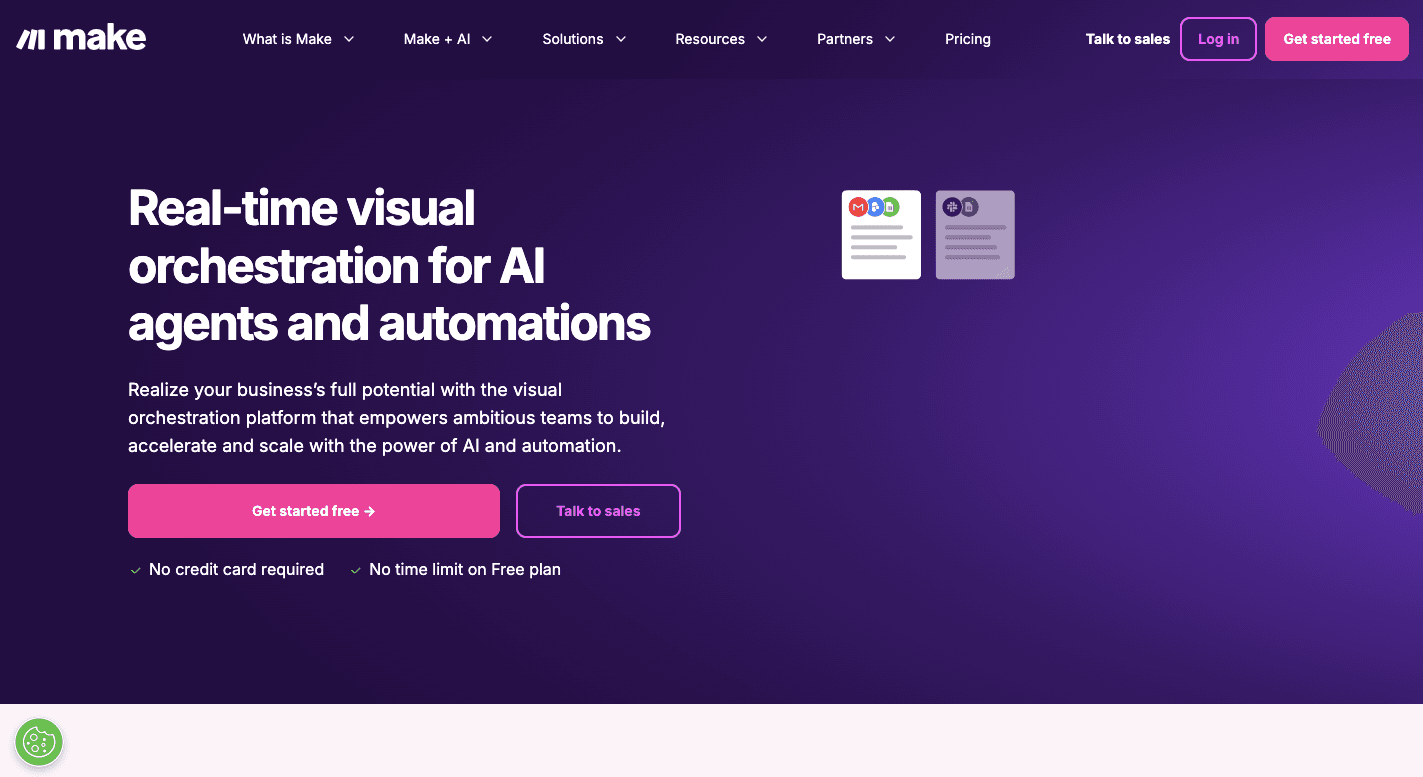
Make (formerly Integromat) connects apps, moves data, and runs automated tasks through a visual editor. You link tools like Gmail, Slack, or Google Workspace with a drag-and-drop builder.
Each scenario starts with a trigger, such as a new email, followed by actions like saving a record or sending a message. You can add filters and branching paths to manage complex workflows and create more advanced setups.
However, running large business processes gets harder. The platform expects extensive technical knowledge from anyone who wants to build advanced flows. Non-technical users notice a learning curve as they move beyond simple tasks.
Since the costs are tied to operations, every step in a flow counts toward your limit. Complicated flows burn your credits quickly, leading to higher bills. Debugging can also slow teams down when errors are hard to trace.
For companies that want to streamline operations, this is what leads to looking for Make alternatives.
6 Make Alternatives to Handle Complex Workflows
Not every team needs the same type of automation. Some want simple task automation to save time on small tasks, while others need more robust software tools to run advanced workflows.
These platforms make it easier to create seamless workflows that grow with your business and handle complex workflows without surprise costs or steep barriers.
1. Activepieces
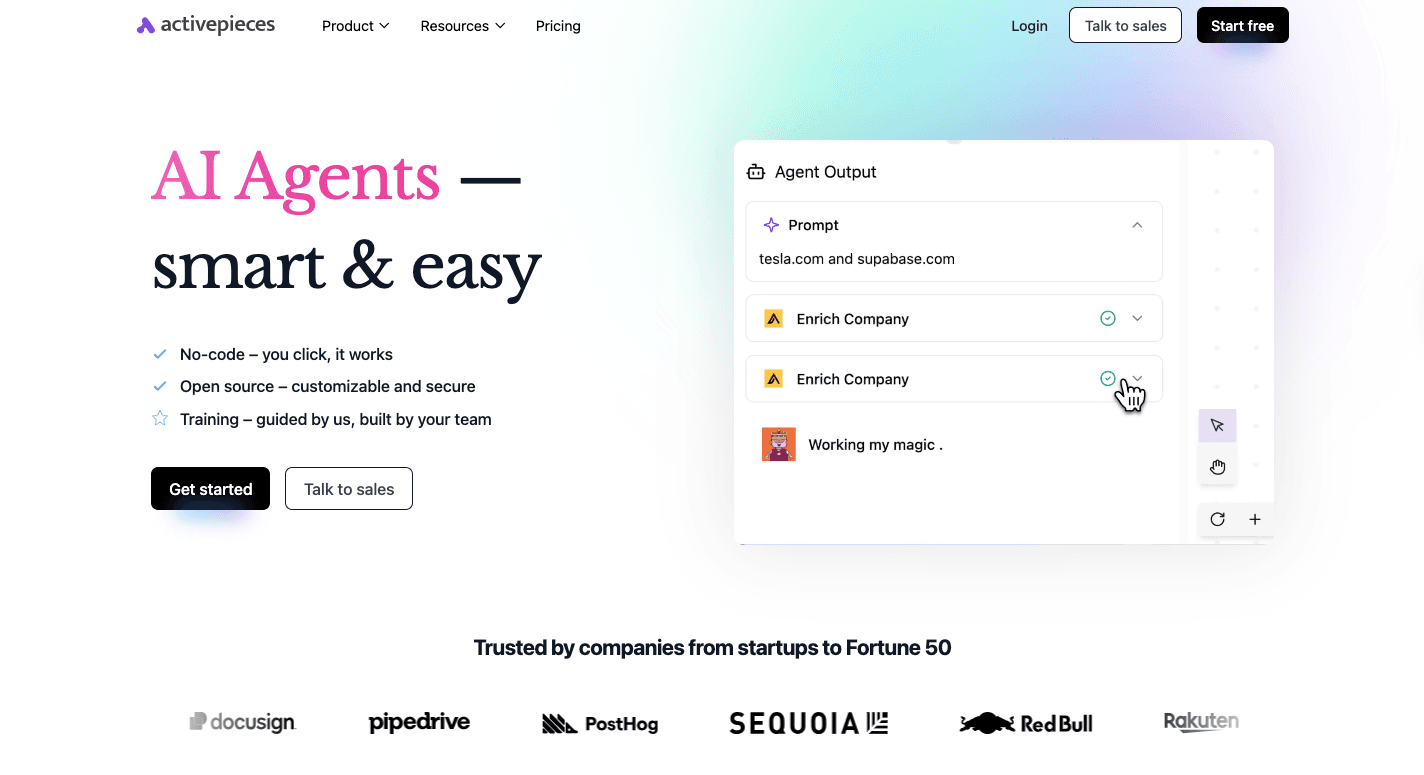
You deserve an AI-powered automation tool that works as hard as you do. Activepieces does that.
With a user-friendly interface, you can build flows quickly using a visual canvas, even if you’re a non-technical business user. Your developers aren’t left out either. The open-source framework lets technical teams create integrations that fit unique needs.
Unlike competitors that lock you into strict paid plans or unpredictable pricing, Activepieces allows you to select between a free self-hosted version or a cloud version. Want tighter control over your data? You can self-host to prioritize data privacy.
Besides that, you currently have more than 544 integrations available. The library keeps expanding with help from the community.
Key Features
Activepieces offers:
Drag-and-Drop Builder
Activepieces gives you a visual workflow builder that keeps workflow creation simple.
You pick a trigger, add steps, and connect pieces with drag-and-drop. In addition, you can keep flows linear or add conditional logic and branching, like “if-this,” when a flow needs decisions, approvals, or retries.
It also supports code blocks in TypeScript, so your team keeps code-level control.
Open-Source Pieces
Activepieces gives you the deep integration capabilities to connect the apps you already rely on. As of right now, there are more than 544 pre-built data integrations, called pieces.
That model helps you ship faster without waiting on a vendor. When a connector doesn’t exist, your devs can build custom integrations using the platform’s developer tools, then reuse them.
Each integration works seamlessly with other apps to keep data accuracy intact across systems. The AI-first design also means model context protocols (MCPs) let agents access all available integrations.
AI-Native Design
You can use built-in AI tools to create an AI workflow that pulls context, takes action, and loops back when needed. Want the flow to draft a reply, summarize a ticket, or enrich a lead? You can integrate AI models like ChatGPT inside the same flow you use for apps and data.
Human-in-the-Loop Approvals
Activepieces includes a human-in-the-loop system that pauses a flow and asks for approval before the next action runs. You can route content for review, ask someone to confirm a value, or delay execution until a person signs off.
Enterprise Controls and Embed Option
Larger orgs need governance, and Activepieces supports role-based access control (RBAC), single sign-on (SSO), audit logs, and environment separation. You can also use Git Sync to version flows and control releases.
Teams that want to ship automation inside their app can use Activepieces Embed. That matters when you need an embedded integration platform as a service (iPaaS) for deep integration without building everything from scratch.
Self-Hosting and Control
Activepieces supports self-hosting, which helps you prioritize data privacy. You decide where data runs, who can access it, and how networks connect.
Self-hosting also gives you complete control over security and compliance boundaries, which fits regulated industries and strict internal policies. Teams with strong technical expertise usually get the most value here because they can tune deployment and access rules to match real requirements.
Pricing
Activepieces offers a free plan and a cloud option, where paid plans start with Standard, which begins free, then charges $5 per active flow per month.
The Standard plan includes 10 free active flows, unlimited runs, AI agents, unlimited MCP servers, unlimited tables, and email support. Ultimate runs on an annual contract through sales and adds governance, SSO, custom RBAC, audit logs, Git Sync, and enterprise deployment support.

Activepieces Embed also runs on an annual contract and starts at $30k per year, aimed at teams that want the builder inside their product, plus branding, private pieces, and dedicated support.
Prefer to host your own setup? The Community Edition is free, open-source, and comes with no task limits. That version gives you full control and helps you prioritize privacy.
Ready for enterprise automation with real controls? Talk to sales!
2. Microsoft Power Automate
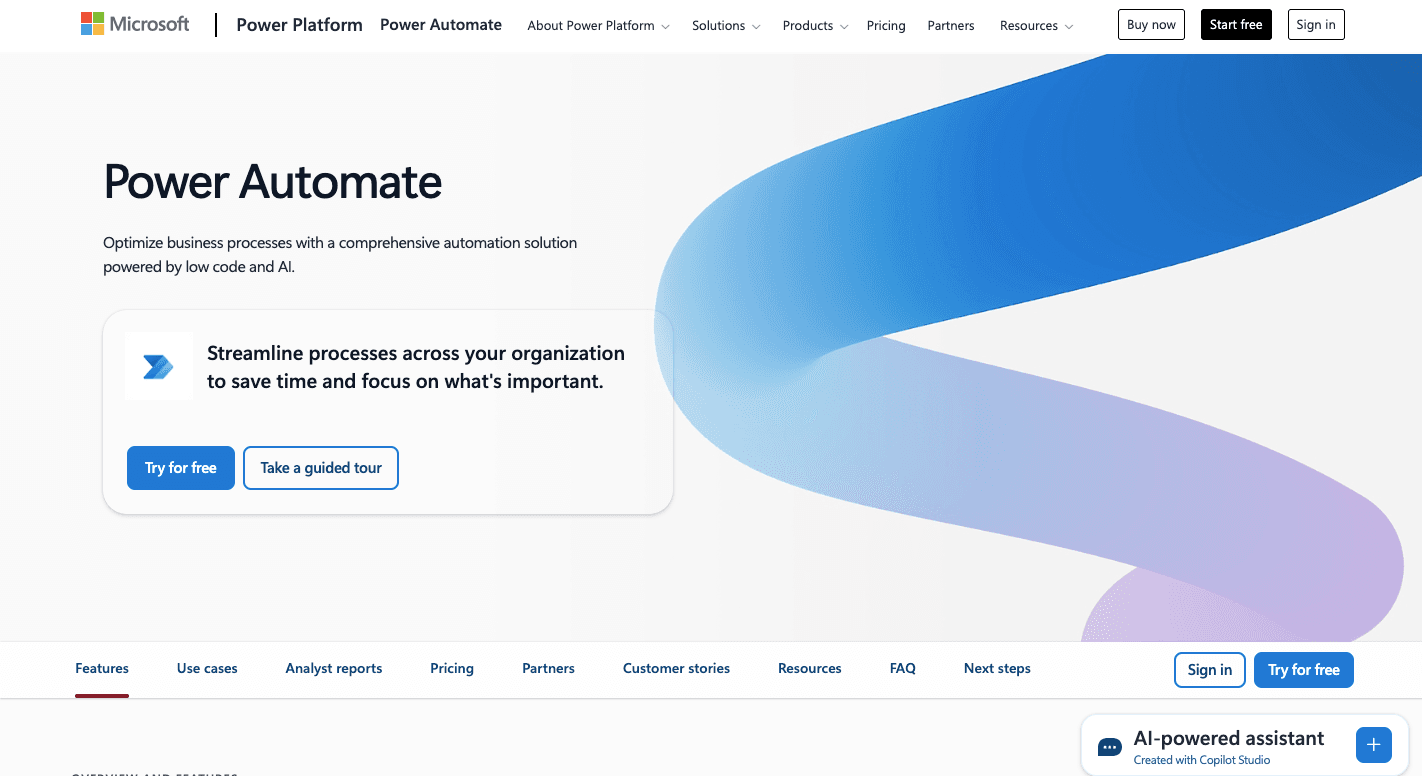
You may already use Outlook, Teams, or SharePoint every day. Microsoft Power Automate is a low-code platform that connects those apps and many others so you can cut manual work and focus on results.
It fits inside the Microsoft ecosystem and offers extensive integration capabilities with Office 365, SharePoint, and Dynamics 365. You can also connect third-party apps such as Salesforce, Dropbox, or Google services.
Teams that rely on marketing automation platforms find it useful for syncing campaigns, sending alerts, or keeping data accurate across systems. Meanwhile, HR manages onboarding fast, finance processes invoices with fewer delays, and sales tracks leads automatically.
Key Features
You get a wide set of advanced automation capabilities and features to support your simple and advanced flows.
- Cloud flows – Trigger actions when events happen, on a set schedule, or with a quick button press.
- Desktop flows – Use robotic process automation to repeat tasks in legacy apps.
- Business process flows – Guide teams through step-by-step stages so no task gets skipped.
- AI builder – Add intelligence to flows that read, sort, and respond to documents or data.
- Pre-built templates – Start faster with ready-to-use flows for common tasks.
- Connectors – Link over a thousand apps, from Microsoft 365 to third-party services.
- Governance tools – Track activity, set permissions, and apply data rules.
- Copilot authoring – Build or adjust flows by writing in plain language.
Pros
- Deep ties with Microsoft 365 tools you already use daily
- Access to a huge library of connectors for syncing data beyond Microsoft
- Include AI-powered features like workflow creation and document processing
Cons
- Debugging issues slows your team down
- The interface feels crowded when you manage multiple flows
- Training takes time if you want to handle advanced scenarios
Pricing
You can start with the basic version included in many Microsoft 365 plans. That option covers simple flows with standard connectors. The Power Automate Premium plan costs $15 per user per month and adds premium connectors and attended RPA.
Larger operations may use the Power Automate Process plan at $150 per bot per month, or the Power Automate Hosted Process plan at $215 per bot per month, which includes a virtual machine on Azure.
All plans come with an annual subscription only.
3. IBM Robotic Process Automation
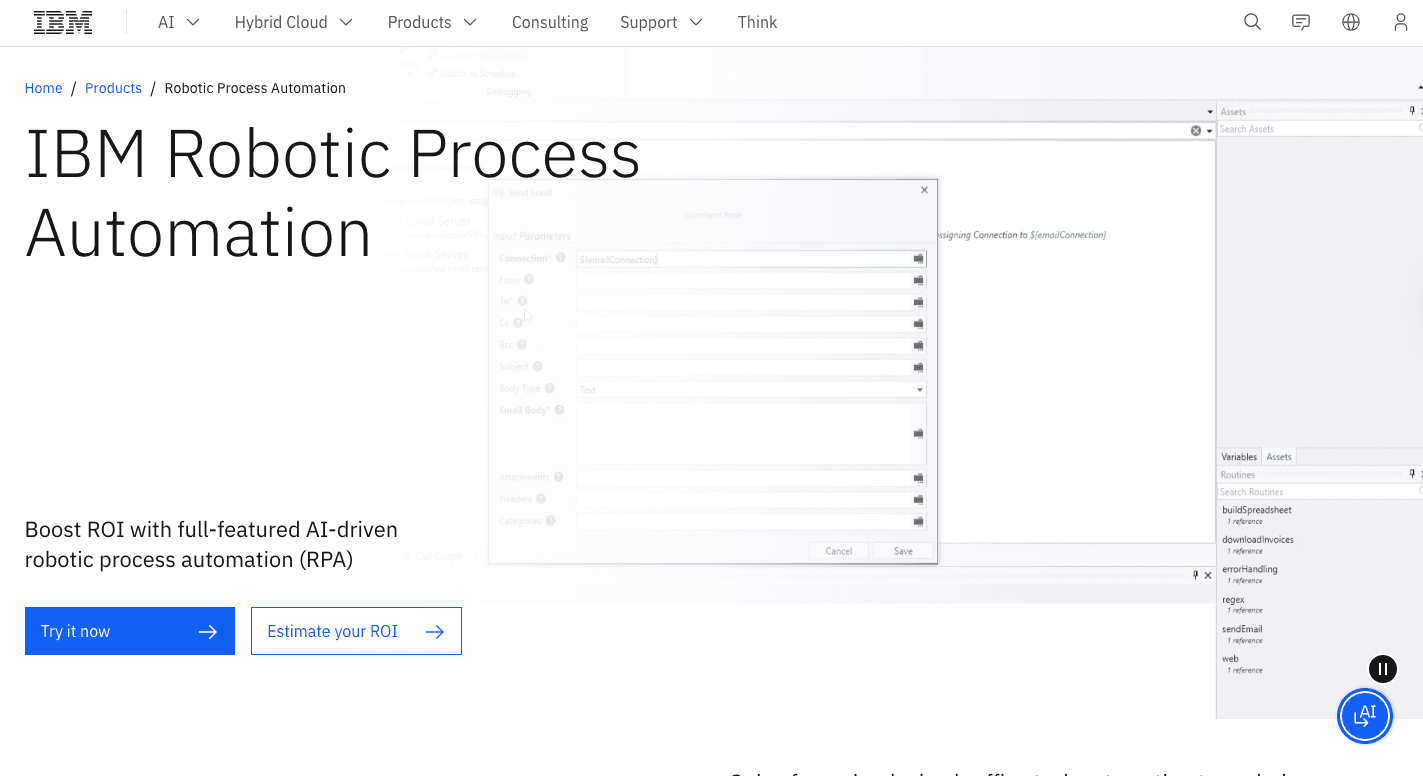
Companies use IBM Robotic Process Automation (RPA) to process invoices, handle claims, and improve customer service without depending on constant human effort. You can build automation workflows that reach across finance, healthcare, insurance, and retail.
Unlike basic software, IBM RPA combines traditional automation with AI. That means your bots can move beyond simple clicks to handle complex tasks like reading documents, pulling data from emails, and even assisting through chat.
As your company grows, you’ll want bots that can connect to multiple systems. IBM RPA does that and gives your managers insights to analyze data and optimize operations.
Key Features
You can expect IBM RPA to deliver a wide set of options for simple and advanced cases.
- Low-code studio – Build bots with a visual editor or add scripts when needed.
- Workflow recording – Record clicks and keystrokes so bots can repeat them later.
- Pre-built templates – Use more than 600 commands to speed up automation builds.
- Concurrent execution – Run several bots at the same time to increase scale.
- AI integration – Use natural language and OCR to handle unstructured data.
- Intelligent chatbots – Add assistants that combine RPA with conversation.
Pros
- AI support improves data processing and document handling
- Deployment in cloud, on-premises, or containers
- Includes compliance features that support industries like healthcare and finance
Cons
- Setup takes longer than expected
- Some teams find the interface less friendly
- Limited language support in OCR slows global adoption
Pricing
IBM prices RPA based on capacity, not per user. It lets you install many bots, as long as you don’t exceed your licensed number of concurrent sessions. You’ll pay separately for attended and unattended bots, with costs varying based on your setup.
4. Huginn
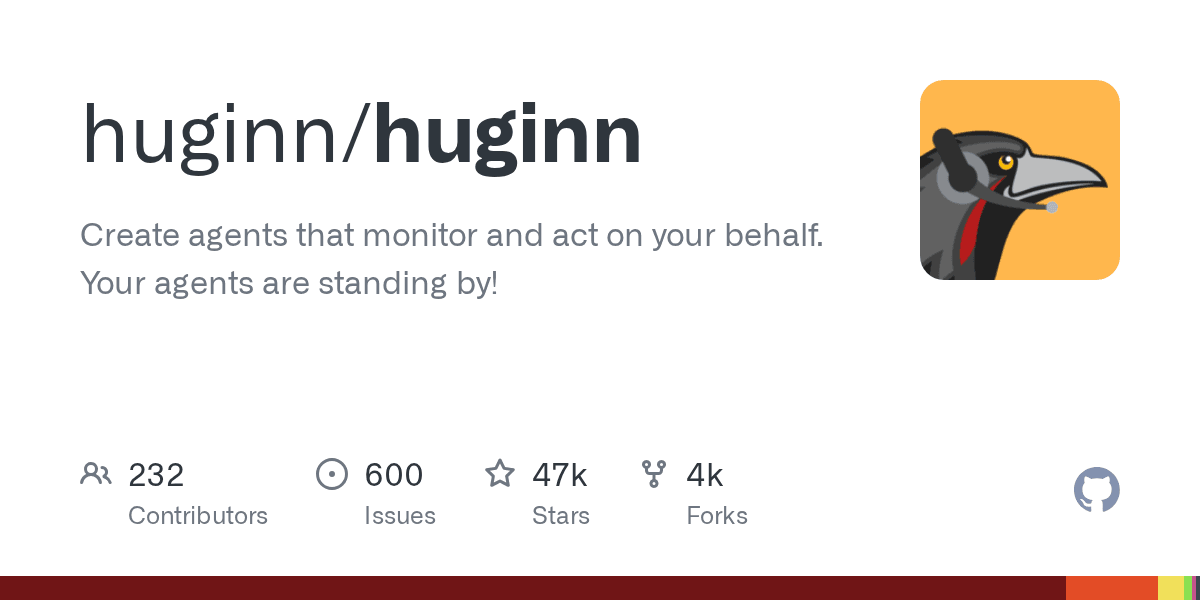
Huginn gives you a source-available workflow automation tool that runs on your own server. There’s no need to rely on a cloud provider. You keep everything local, which appeals to teams that care deeply about privacy and control.
Besides that, you can build AI agents that connect together, forming automation workflows that gather data, send alerts, or even react to changes online.
Companies use Huginn to automate repetitive tasks like monitoring price changes, tracking keywords, or pulling updates from websites. Even developers utilize it because you can script and extend agents to fit nearly any scenario.
Data integration between systems, such as social media platforms, email, and RSS feeds, is further supported. By chaining agents, you can fetch data, apply filters, and maintain data accuracy.
Key Features
Huginn comes with features for technical users and privacy-focused teams.
- Agents – Small building blocks that handle one task, such as scraping or sending alerts.
- Events – JSON data that agents create and consume, passing details between steps.
- Scenarios – Chains of agents that form bigger custom workflows for business or personal use.
- Event-driven system – Actions trigger in real time when data changes.
- Web scraping – Extract details from websites and process them for reporting.
- Data manipulation – Clean, filter, or adjust information as it moves between services.
- Notifications – Send alerts through email, text, or webhooks when conditions are met.
- Self-hosting – Operate everything on your own server to keep privacy and security in your hands.
Pros
- Full privacy since everything stays on your server
- Freedom to build and streamline processes with custom agents
- No vendor lock-in or rising subscription bills
Cons
- The interface feels plain compared to polished SaaS tools
- Beginners may find JSON-based configuration tough
- Fewer ready-made integrations compared to cloud services
Pricing
Huginn is free to download and use since it’s open source. You only cover the cost of infrastructure, such as renting a virtual private server (VPS) or running it on your own hardware.
5. Odin AI
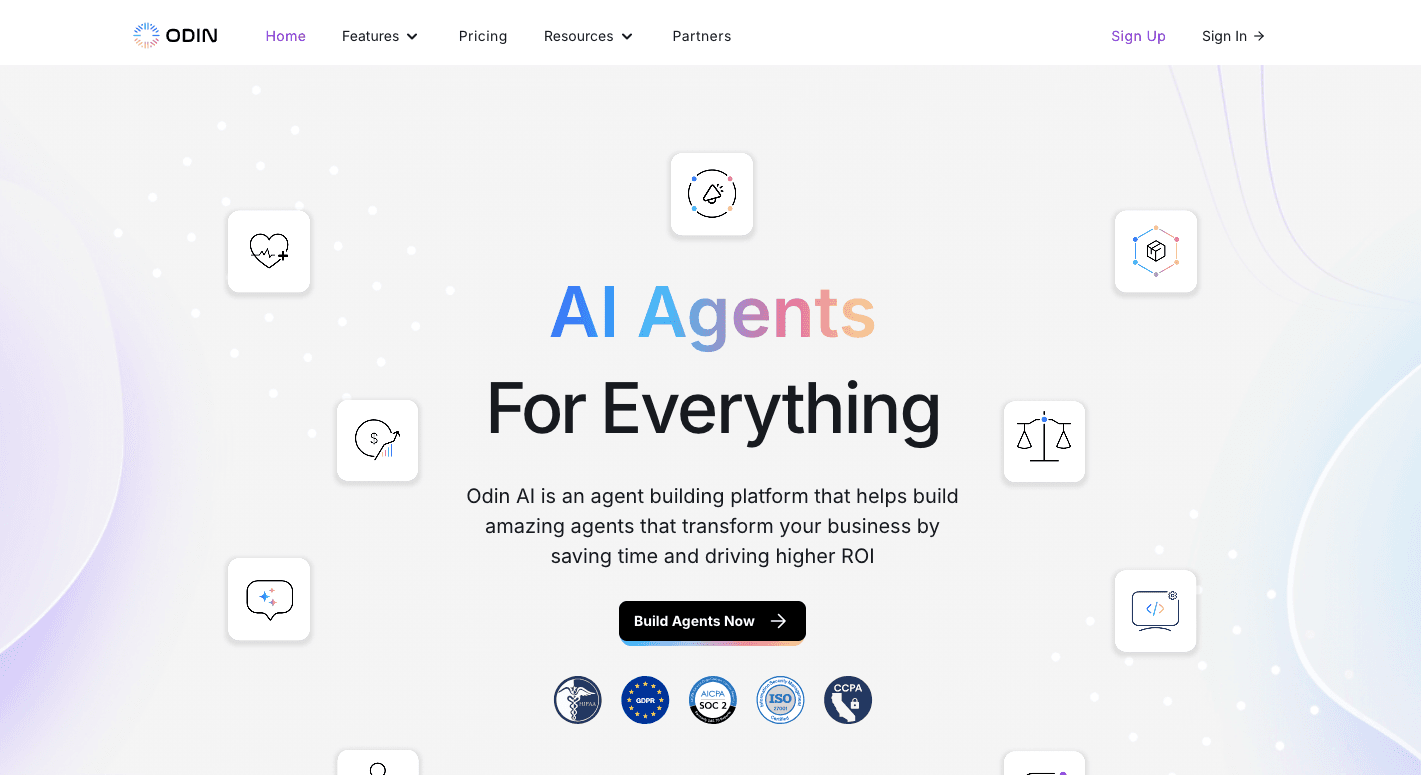
Odin AI combines no-code design with generative AI agents. With it, you create agents that can plan, decide, and carry out steps on their own. That makes it easier to move beyond routine automation and build flows that feel closer to intelligent digital workers.
Businesses use Odin AI for sales, HR, support, and operations. For example, an AI agent can respond to customer requests, log tickets in a CRM, or prepare summaries after meetings.
The system works with many tools, such as Salesforce, Slack, and Google Workspace, so you can connect the tools you already use. It also handles advanced data manipulation, like parsing large files, extracting information, and making it searchable.
Other than that, Odin AI focuses on enterprise needs with advanced features such as security frameworks, knowledge hubs, and chatbot builders. Since it provides scalable solutions, many teams prefer to use it.
Key Features
Odin AI comes with features that give you more than standard automation.
- Customizable AI agents – Build agents with unique roles for sales, HR, or support.
- Mission-based execution – Define goals and let agents plan and complete tasks.
- Conversational AI – Use NLP to give agents context-aware responses.
- Knowledge management – Upload files, SOPs, and videos to train agents.
- Document parsing – Handle PDFs and reports with advanced data manipulation.
- Automation builder – A no-code interface for setting up flows across apps.
- Broad integrations – Connect with hundreds of business tools, from CRMs to project apps.
- Security framework – Features like zero-trust policies protect sensitive data.
Pros
- Advanced features like chatbot builders and meeting notetakers
- Integration with more than 200 services
- Privacy and compliance tools meet strict standards
Cons
- Higher pricing than lighter tools
- Takes time to learn compared to simple drag-and-drop apps
- Still a newer product, so updates change often
Pricing
Odin AI offers a Team plan at $25 per month. You get unlimited AI agents, access to advanced AI models, API access, and over 200 integrations.
6. Workato
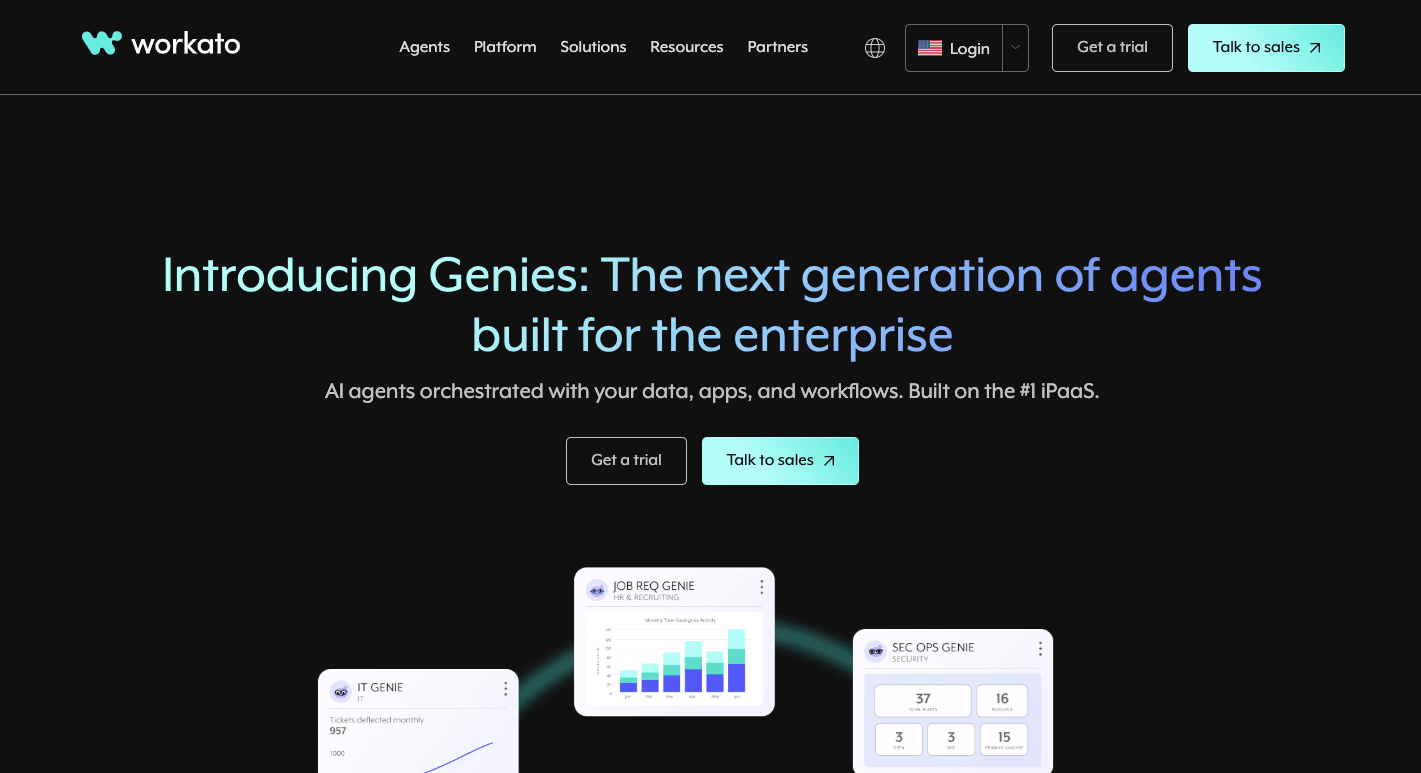
Workato uses a concept called recipes to create workflows that connect apps and automate business processes in real time. Those recipes let your team update CRM systems, sync data with finance tools, or manage approvals without writing heavy code.
Many organizations choose it since it allows you to build complex workflows that fit any enterprise demands. The system makes data management easier by cleaning, transforming, and moving information between apps, which helps maintain data accuracy.
For leaders focused on growth, Workato delivers the power to scale operations effectively while maintaining compliance and governance. You can track workflow history, assign roles, and use audit logs to keep oversight in place.
It even includes unlimited workflow executions in some enterprise packages and has a system similar to global variables for storing shared data.
Key Features
Workato comes with these features to manage complex automation needs within an intuitive interface for designing flows:
- Recipes – Pre-built or custom flows that link apps and carry out actions.
- Low-code builder – Drag-and-drop interface that supports technical and non-technical users.
- Data transformation – Rich tools for cleaning, mapping, and handling data.
- Extensive connectors – Over 1,000 integrations covering ERP, HR, finance, and CRM systems.
- AI assistance – Recipe IQ and Genie use artificial intelligence to optimize workflows.
- Error handling – Retry actions, define fallbacks, and send custom alerts.
- Smart versioning – Track changes to recipes and maintain workflow history.
Pros
- Recipes that let you create workflows
- Enterprise-level data management and transformation tools
- Seamless integration with both cloud and on-prem systems
Cons
- Building advanced flows comes with a steeper learning curve
- Large workflows sometimes clutter the visual builder
- Strict platform limits restrict very high-volume cases
Pricing
Workato’s pricing isn’t posted online.
Choose the Leading Make Alternative Today — Activepieces
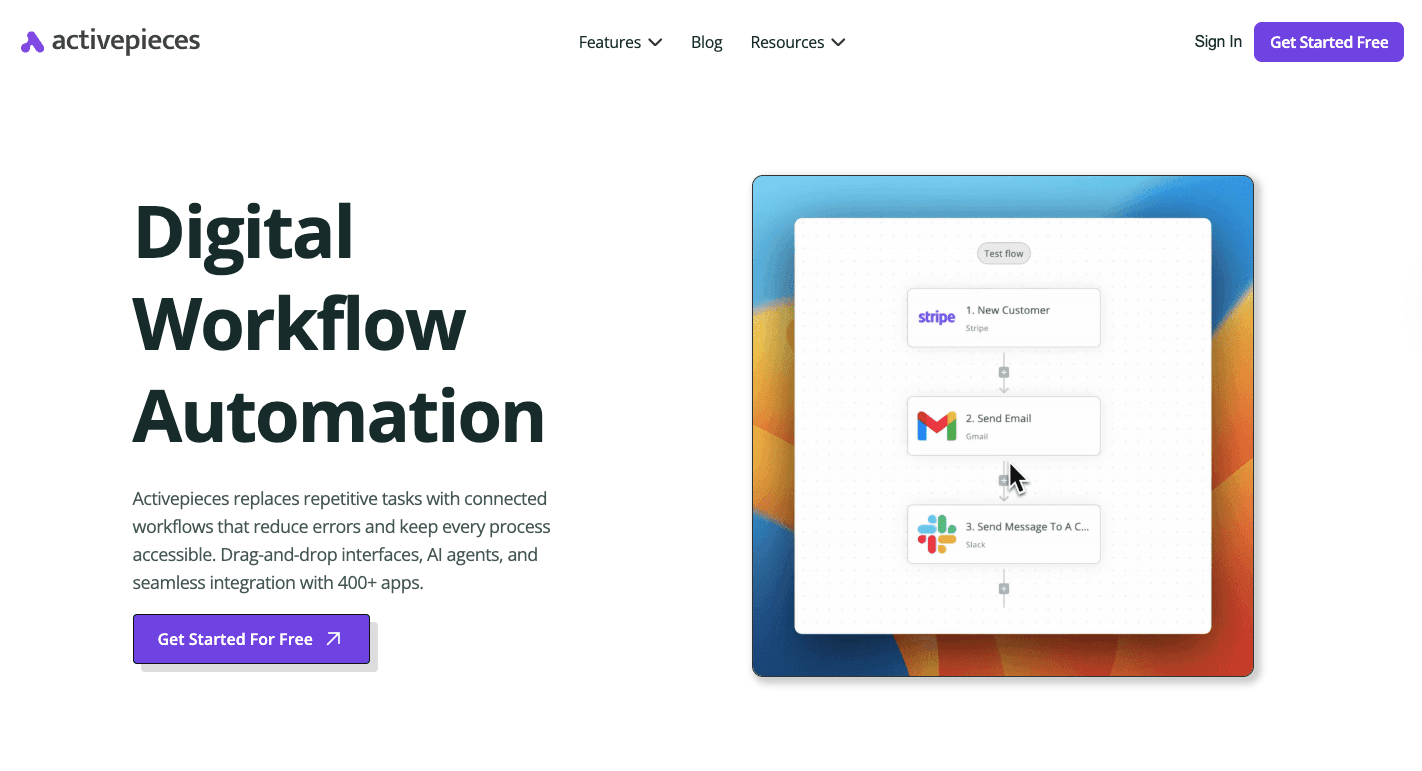
You’ve seen the pros and cons of each alternative. Now ask yourself: why settle for limits when you can choose a powerful tool that adapts to every team and scales with your business?
Activepieces is an open-source platform that is more than a competitor to Make. It cuts repetitive work, connects hundreds of apps, and brings AI into your daily flows.
Your teams save hours by running complex processes automation with a user-friendly interface that anyone can learn. Even if you come from a non-technical background, you can build basic workflows without programming language knowledge and see results right away.
Activepieces meets you where you are.
Need a quick setup for your marketing team? Done. Want enterprise-grade security controls with full branding? You’ll have it. Need more complex integrations to various enterprise systems or legacy systems? The Activepieces community has you covered.
You don’t need multiple AI automation platforms or worry about hitting arbitrary task limits. You only need Activepieces to save time, protect data, and adapt as your business grows.
Upgrade from basic automation to AI-ready control. Explore Activepieces!
FAQs About Make Alternatives
Which is better, Zapier or Make?
Between Zapier and Make, Zapier is usually easier for beginners, while Make offers more customization for advanced users.
What are examples of Make alternatives?
Examples of Make alternatives include Activepieces, Microsoft Power Automate, IBM Robotic Process Automation, Huginn, Odin AI, and Workato.
What should you look for in the best Make alternatives?
When looking for the best Make alternatives, focus on ease of use, cost transparency, available integrations, and AI features.


